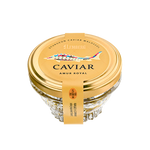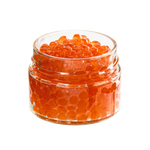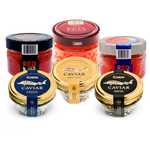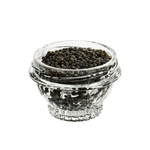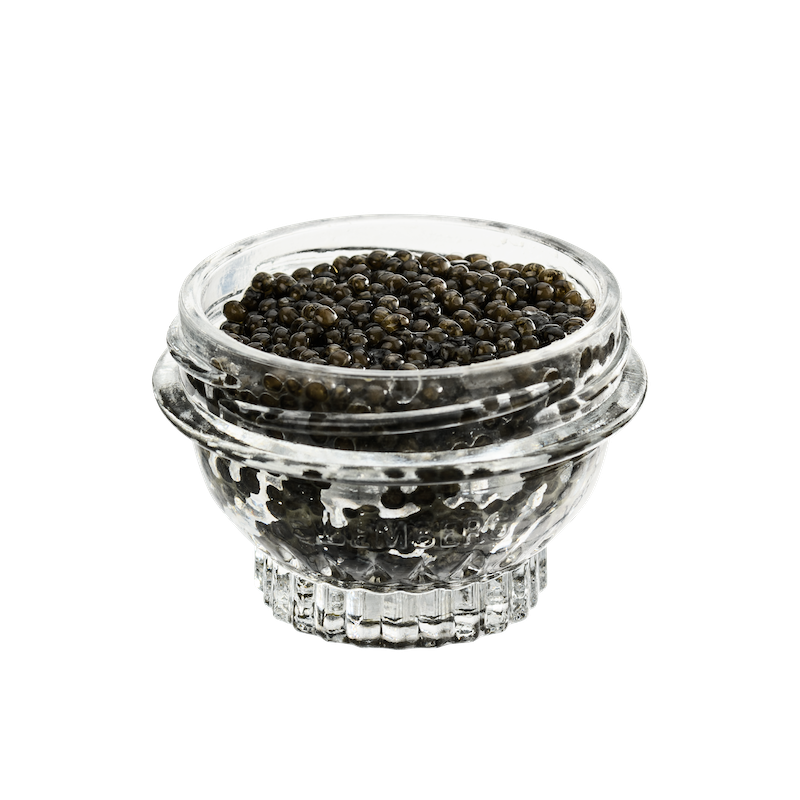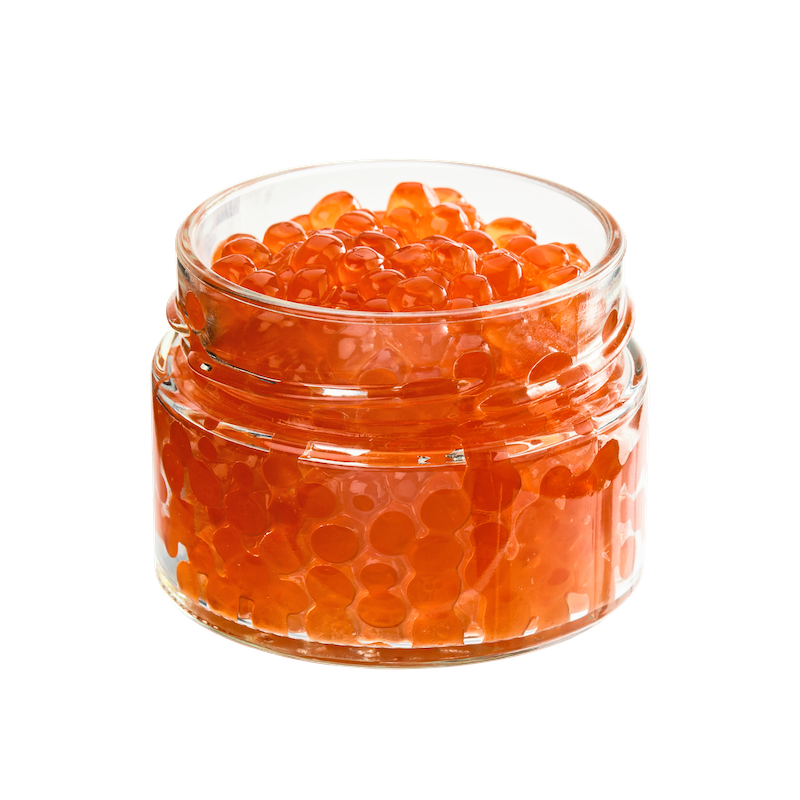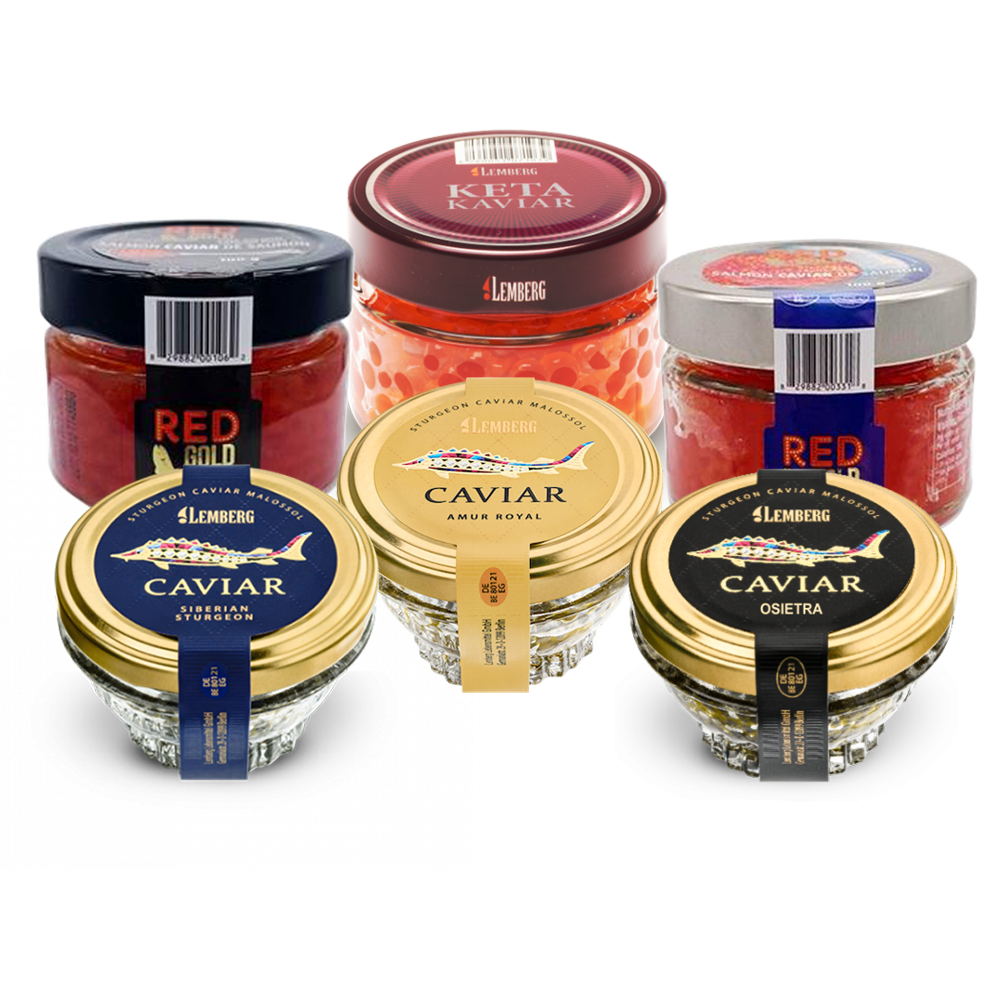Menu

Caviar extraction: in detail
Why is caviar so expensive? People who have no idea how the product is produced usually don't understand why the price is pretty high. What fish does caviar come from? What is the exact procedure? First of all, there are lots of types of the product.
We'll tell you about the extraction of the two most popular caviar types: black (sturgeon) and red (salmon). So, at the very first stage, fish are caught. The best season for it is the period from June to October. Time frames matter here. Also, the quality depends on the time it takes to cut the fish. Professionals say that if caviar stays in fish for too long, the quality of the final product will be lower. As a rule, fish cutting is made right on the place where fish were caught (or on a plant). All the internal organs are separated, and after this, sorting takes place. It is usually done with the help of sieves. To get the best purity and quality, it passes through two looms on an inclined gauze. The goal is to e residual impurities.
So, at the very first stage, fish are caught. The best season for it is the period from June to October. Time frames matter here. Also, the quality depends on the time it takes to cut the fish. Professionals say that if caviar stays in fish for too long, the quality of the final product will be lower. As a rule, fish cutting is made right on the place where fish were caught (or on a plant). All the internal organs are separated, and after this, sorting takes place. It is usually done with the help of sieves. To get the best purity and quality, it passes through two looms on an inclined gauze. The goal is to e residual impurities.
After this, the product goes into a concentrated salt brine. As a rule, it is left for about twenty minutes there. Then, fish product goes to a centrifuge: it is needed to eliminate brine and water.
Then comes quality control: a big illuminated table is covered with the product; also, preservatives are added. Caviar is put and containers and goes to workshops, where it will be packaged properly and then go to stores. Why is such a delicacy considered a very expensive product? This is due to the complexity of growing sturgeons, as well as the catastrophic decrease in their numbers in natural habitats. Therefore, for more than 20 years, it has been forbidden to catch sturgeon in the wild; it is grown on aquaculture farms exclusively. In addition, fish is very whimsical; one sturgeon requires more than one cubic meter of water. The cultivation process is very long and expensive; only after 7-10 years can one count on getting the product.
Why is such a delicacy considered a very expensive product? This is due to the complexity of growing sturgeons, as well as the catastrophic decrease in their numbers in natural habitats. Therefore, for more than 20 years, it has been forbidden to catch sturgeon in the wild; it is grown on aquaculture farms exclusively. In addition, fish is very whimsical; one sturgeon requires more than one cubic meter of water. The cultivation process is very long and expensive; only after 7-10 years can one count on getting the product.
A method called "cesarean section" is also practiced, but due to its laboriousness, it is not suitable for processing large production batches of fish. The last method is the slaughter of fish. Growing a sturgeon is a difficult, labor-intensive process. Depending on the degree of maturity of the grains, granular, pressed, ovary caviar is produced. The selection of small portions of fish caviar by means of a special probe helps to determine the maturity of the product. According to the manufacturing method, there are:
Pressed caviar is obtained by salting in a hot solution, followed by pressing the grain.
The production usually does not involve separating the grain from the connective tissue. The product is divided into pieces 10-12 cm long and salted in strong brine.
What Does Caviar Taste Like: A Guide to the Flavor of This Luxurious Delicacy
How to eat caviar?
| Black caviar | Red caviar |
|---|---|
| Beluga | Salmon |
| Ossetra | Trout |
| Sturgeon | Whitefish |
| Sterlet | Steelhead |
Extraction of red caviar
 So, at the very first stage, fish are caught. The best season for it is the period from June to October. Time frames matter here. Also, the quality depends on the time it takes to cut the fish. Professionals say that if caviar stays in fish for too long, the quality of the final product will be lower. As a rule, fish cutting is made right on the place where fish were caught (or on a plant). All the internal organs are separated, and after this, sorting takes place. It is usually done with the help of sieves. To get the best purity and quality, it passes through two looms on an inclined gauze. The goal is to e residual impurities.
So, at the very first stage, fish are caught. The best season for it is the period from June to October. Time frames matter here. Also, the quality depends on the time it takes to cut the fish. Professionals say that if caviar stays in fish for too long, the quality of the final product will be lower. As a rule, fish cutting is made right on the place where fish were caught (or on a plant). All the internal organs are separated, and after this, sorting takes place. It is usually done with the help of sieves. To get the best purity and quality, it passes through two looms on an inclined gauze. The goal is to e residual impurities.After this, the product goes into a concentrated salt brine. As a rule, it is left for about twenty minutes there. Then, fish product goes to a centrifuge: it is needed to eliminate brine and water.
Then comes quality control: a big illuminated table is covered with the product; also, preservatives are added. Caviar is put and containers and goes to workshops, where it will be packaged properly and then go to stores.
Extraction of black caviar
 Why is such a delicacy considered a very expensive product? This is due to the complexity of growing sturgeons, as well as the catastrophic decrease in their numbers in natural habitats. Therefore, for more than 20 years, it has been forbidden to catch sturgeon in the wild; it is grown on aquaculture farms exclusively. In addition, fish is very whimsical; one sturgeon requires more than one cubic meter of water. The cultivation process is very long and expensive; only after 7-10 years can one count on getting the product.
Why is such a delicacy considered a very expensive product? This is due to the complexity of growing sturgeons, as well as the catastrophic decrease in their numbers in natural habitats. Therefore, for more than 20 years, it has been forbidden to catch sturgeon in the wild; it is grown on aquaculture farms exclusively. In addition, fish is very whimsical; one sturgeon requires more than one cubic meter of water. The cultivation process is very long and expensive; only after 7-10 years can one count on getting the product. The process
How is black caviar extracted? The "milking" method is mainly used, which involves cutting the oviducts while leaving the fish alive.A method called "cesarean section" is also practiced, but due to its laboriousness, it is not suitable for processing large production batches of fish. The last method is the slaughter of fish. Growing a sturgeon is a difficult, labor-intensive process. Depending on the degree of maturity of the grains, granular, pressed, ovary caviar is produced. The selection of small portions of fish caviar by means of a special probe helps to determine the maturity of the product. According to the manufacturing method, there are:
- granularly canned (lightly salted);
- granular barrel (strongly salted);
- oval and pressed caviar.
Pressed caviar is obtained by salting in a hot solution, followed by pressing the grain.
The production usually does not involve separating the grain from the connective tissue. The product is divided into pieces 10-12 cm long and salted in strong brine.
To sum up
So, where do caviar come from? Now you are fully aware of it. Having knowledge of how caviar is extracted, you can not only choose a quality product but also understand the difference between different production technologies. Accordingly, there is also a rationale for the unequal cost of different types of caviar.Read more:
What is Caviar? Discover the Delicacy and Its HistoryWhat Does Caviar Taste Like: A Guide to the Flavor of This Luxurious Delicacy
How to eat caviar?
- Choosing a selection results in a full page refresh.





